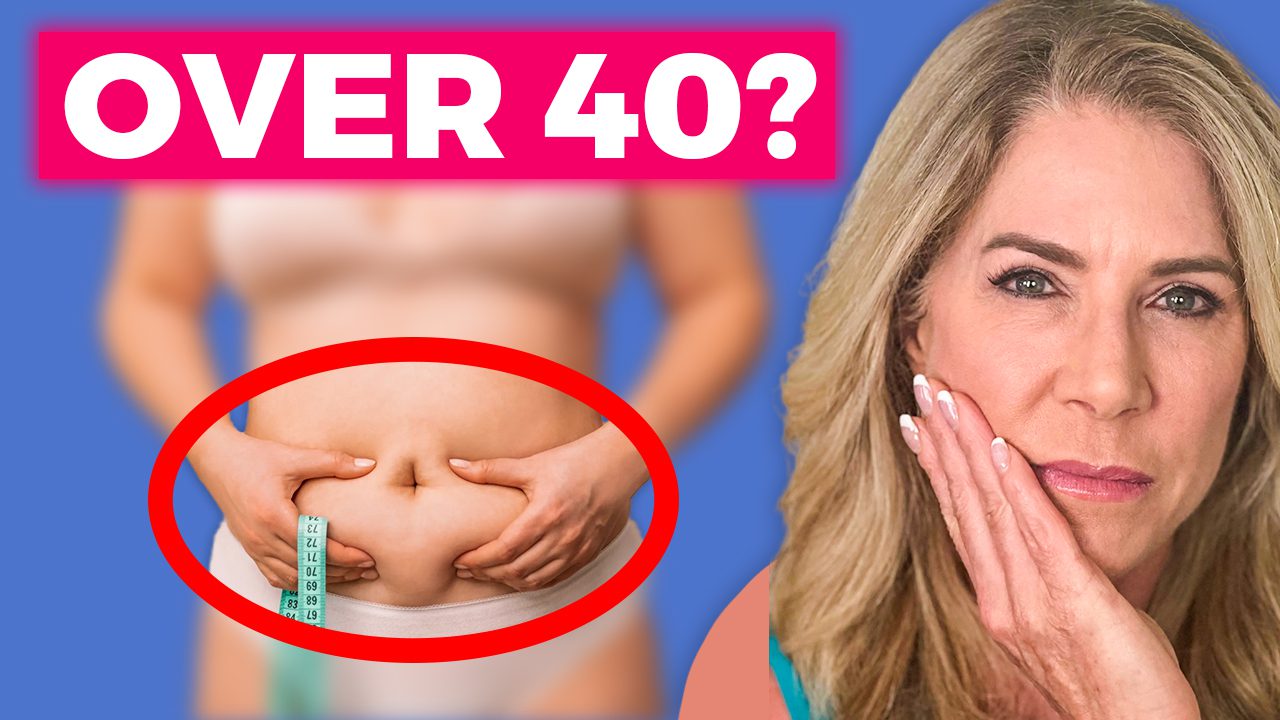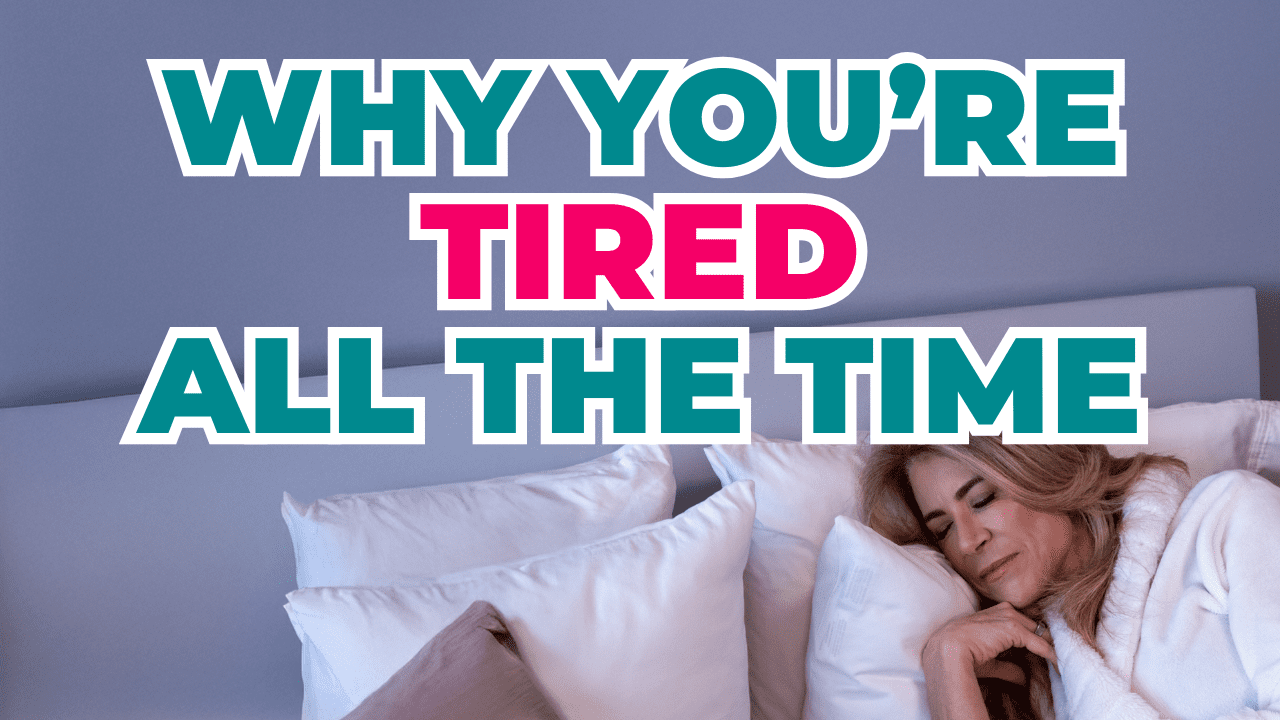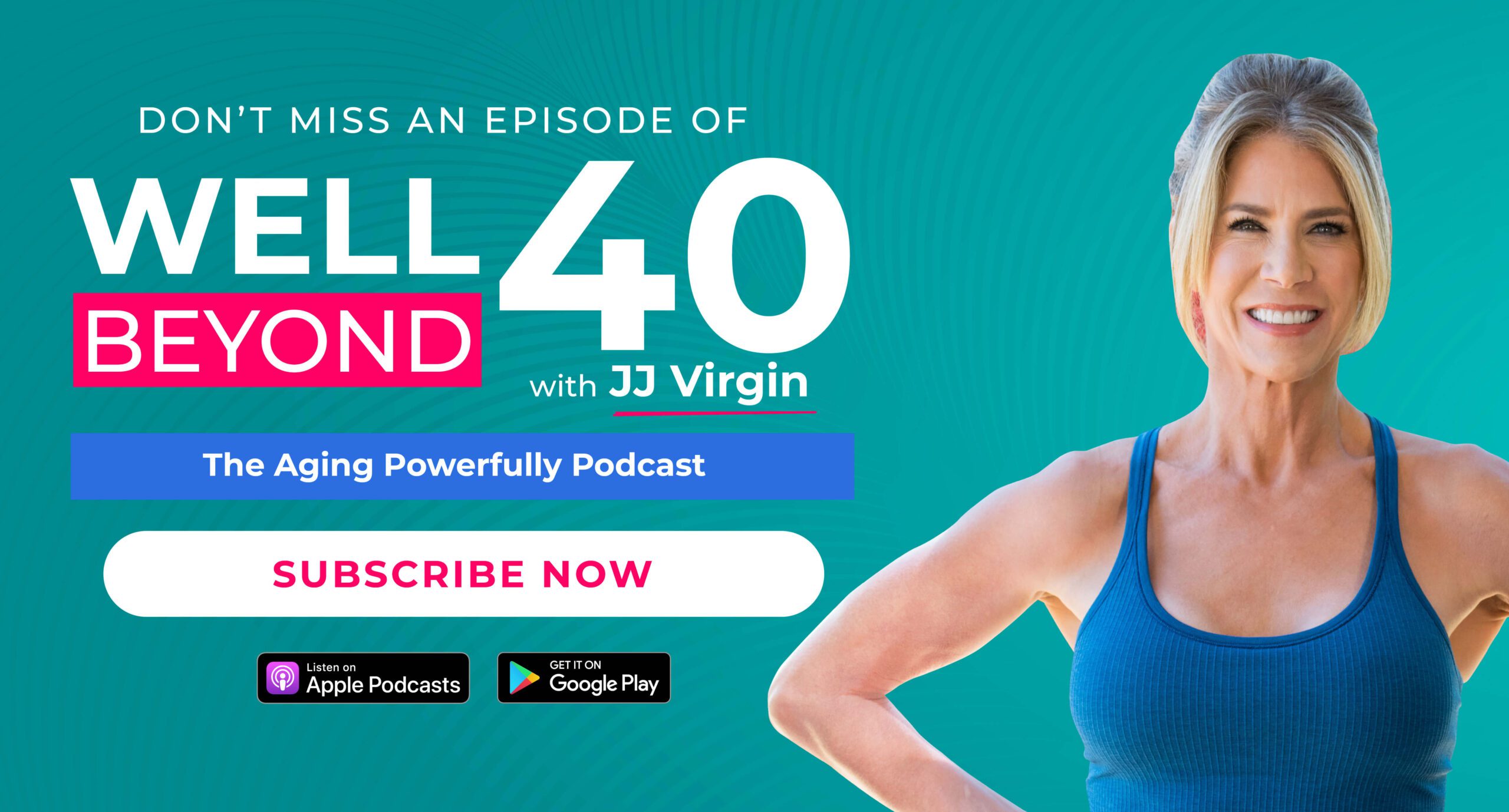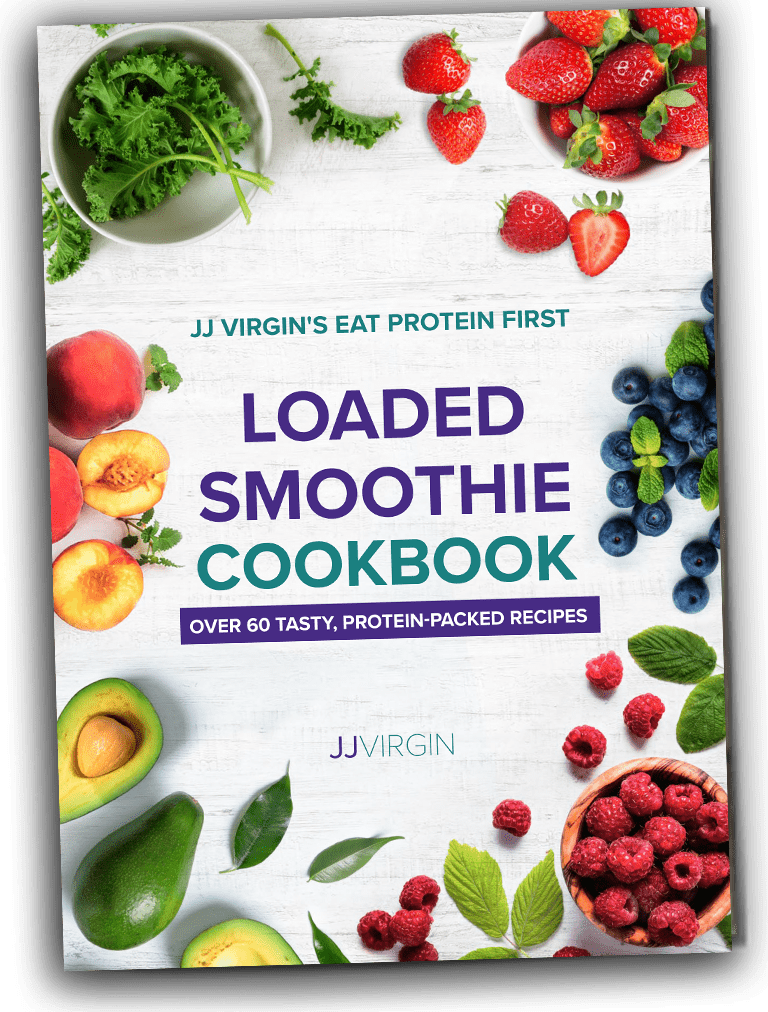Understanding Insulin, Autophagy, and Fasting
Is this the key to burning fat after 40? Today I’m going to talk about the healthy-aging, health-boosting hack that’s like a spring cleaning for your cells. The good news is it’s simple and inexpensive to do. The secret is…fasting.
In this episode, I explore how you can optimize your health through strategic eating and fasting, as well as their profound effects on your body. It’s all here, from the importance of easing into fasting gradually to the benefits of growth-hormone production.
An important takeaway is that eating at specific times of the day can have remarkable effects on your health. Did you know the best way to help reset and rejuvenate your body is to fast for 12 to 14 hours overnight? Plus, discover how a 6-8 hour feeding window optimizes your metabolism and energy levels.
I emphasize balance, consistency, and personalized approaches to fasting throughout this episode, so you can identify which method is best for you. My goal is to empower you with the knowledge and strategies you need to make informed decisions about your health and well-being.
Timestamps
00:01:44 – What intermittent fasting and TRF are and why you should ease into it
00:02:55 – The benefits of fasting
00:04:20 – Eating in a 10- to 12-hour window to help with growth-hormone production
00:06:15 – Explaining autophagy
00:07:48 – Explaining ketosis and its impact on metabolism
00:09:35 – Using fasting as a tool to restore insulin sensitivity and better blood sugar
00:09:54 – Cycle building, limit fasting to TRF, optimal protein for your goals
00:13:26 – Focus on healthy fats and consider slow low carbs for fiber
00:14:47 – Eat by the plate for better blood-sugar control
00:16:17 – Bed is for restoration, not for digestion
Resources Mentioned in this episode
Watch the FULL VIDEO on JJ’s Youtube Channel
The Circadian Code by Dr. Sachin Panda
The Complete Guide to Fasting by Dr. Jason Fung
Watch these two videos on Sleep Hygiene (Video 1) and (Video 2)
ATHE_Transcript_Ep 568_Autophagy and Fasting – The Secret Key To Fat Loss Over 40?
JJ Virgin: [00:00:00] I’m JJ Virgin, PhD Dropout. Sorry, mom, turn four time New York Times bestselling author. Yes, I’m a certified nutrition specialist, fitness Hall of Famer, and I speak at health conferences and trainings around the globe, but I’m driven by my insatiable curiosity and love of science to keep asking questions, digging for answers, and sharing the information that I uncover with as many people as I can, and that’s why I created the Well Beyond 40 podcast.
To synthesize and simplify the signs of health into actionable strategies to help you thrive. In each episode we’ll talk about what’s working in the world of wellness, from personalized nutrition and healing your metabolism to healthy aging and prescriptive fitness. Join me on the journey to better health so you can love how you look and feel right now and have the energy to play full out at 100.
[00:01:00] Is this the secret key to burning fat after 40? Let’s talk about the anti-aging health boosting hack. That’s like a spring cleaning for your cells, and the good news is it’s simple and inexpensive to do. I’ll give you a secret. It’s fasting. Now, here’s the deal. There are a lot of different ways to fast, and they have varying levels of ease of use and benefits.
So I’m gonna deep dive into the different types of fasting and their benefits so you can identify which is best for you with what you are going through, what you have, and what you’re looking to achieve in your health. And then I’m gonna show you how you can implement fasting into your daily routine.
And by the way, I strongly believe that you have to ease into fasting. You don’t go from eating three meals and three snacks over 15 hours a day to fasting unless you wanna feel pretty miserable. Let’s start with the definition. What exactly is fasting now? There are a lot of terms being thrown around interchangeably.
Most notably fasting. Intermittent fasting, and time-restricted feeding. So IF, intermittent [00:02:00] fasting and T R F time restrictive feeding are when you limit the time window that you’re eating in. So you’re fasting for a specific number of hours each day, and then you’re eating during a specific number of hours each day.
This could include a 12 to 14 hour overnight fast, which honestly is the baseline minimum we should all be doing. Okay, and we’ll talk more about that. Then you can take it further to a six to eight hour feeding window. Which is some definite benefits. You could shift into OMAD that’s one meal a day. And then you could start to go into more of a real fast, like eating every other day or doing an extended water fast of 48 hours or more.
These distinctions are important and which ones you choose are gonna be based on your goals and your current health status, because some of the benefits of fasting require extended time periods to kick in. So we’ve gotta really know what you’re trying to achieve. So let’s talk benefits. Because even doing moderate time restrictive feeding, like eating within a 10 to 12 hour window can start to improve blood sugar and insulin sensitivity.
And by the way, I’m [00:03:00] gonna be so bold as to say that this is what we should be doing at a bare minimum, always, no matter what. We’ll do a little drawing with this every time you eat. We had a meal. I’ll make a hamburger. Gluten free, grass fed, you eat, and your blood sugar when you eat is going to go up. How much it goes up is really gonna depend on what you ate, right, and how insulin sensitive you are.
But no matter what, if you’re eating carbs and proteins, especially carbs, your blood sugar’s going up and then your pancreas is going to release insulin to bring the blood sugar down. So here’s what happens. Insulin comes up and it brings blood sugar down, but insulin doesn’t move very quickly. So, Your pancreas releases insulin to bring blood sugar down.
Insulin’s not moving very quickly. Blood sugar moves quickly when you eat again. Let’s say you had a little snack, maybe you had a skinny latte and a low fat muffin. Guess what happens when you do that? Your blood sugar goes back up, but insulin never had [00:04:00] time to really respond. So you see how insulin’s staying up while blood sugar keeps getting driven back down again, doing that over and over again without giving insulin a time to come down to fasting levels too.
Can lead through insulin resistance. And a host of other health problems like type two diabetes, dementia, and heart disease. Nothing fun. So the first thing that we wanna focus on is kicking out the snacks and eating within a 10 to 12 hour window, because that 10 to 12 hour window also helps with growth hormone production, which is super important.
In anti-aging, fasting enhances growth, hormone secretion and growth hormone is critical for regulating metabolism. It’s also critical for muscle protein synthesis, which is how your body repairs muscle and makes muscle right, and this is so key critical for me, maintaining muscle we age. It also helps with fat burning and avoiding too much visceral adipose tissue.
And visceral adipose tissue is the type of fat that sits around your organs and it’s the inflammatory fat. Growth hormone [00:05:00] also helps with joint regeneration, healthy bones, balance cholesterol levels, and brain function. So this alone, this one thing, is a huge reason to make sure that at a bare minimum, you’re doing the 12 hours or less timeframe.
I’m gonna cite something from Dr. Sachin Panda who wrote the circadian code. So this is crazy. I couldn’t believe it when I read it. He says that only 10% of the population is actually eating within this 12 hour window, that the average American is eating for 15 hours a day. 15 hours a day, that means you wake up and you basically eat till you pass out.
I mean, that is crazy. At the very least, after watching this, please make the commitment, pinky promise me to shut the kitchen down after dinner and stop eating at least three hours before bedtime. And I’m gonna explain why. There’s a real reason why in a bit. I’m not just being mean. When you compress your feeding window to six to eight hours a day, you start to have even more benefits as this is when autophagy starts to kick in.
So I’m gonna give you some stuff so you remember this. So [00:06:00] again, the 10 to 12 hour window, we have growth hormone, six to eight autophagy. Now what is a Autophagy. So Greek for auto = self. And phagy is to eat so autophagy literally means eating oneself, which doesn’t sound so great, but what it’s actually doing is eating the damaged cells.
It’s where the damaged cells in your body and your brain are cleared out, recycled or repaired, to make room for healthy cells to proliferate. See, our bodies are meant to stay in balance between breaking down and building up, and a great example of that is our bones. Every day we are breaking down bone and remodeling bone.
This is something we do on an ongoing basis. Same with our muscles. We have other damaged proteins that we need to do as well. Things like advanced glycated end products. These are known as ages, and these are the proteins or fats that you eat in your diet that bind with sugar in the bloodstream. They don’t need enzymes to do this, and they make these compounds that create inflammation and [00:07:00] accelerate aging in the body.
The best way to think of an ages, Is to look at bread, look at the crust on bread that is literally ages in action that is happening in and on your body. We do not want that. And here’s what’s cool. Autophagy can use the old damaged proteins to create new proteins. So here’s a great description from Dr.
Jason Fung from his book, the Complete Guide to Fasting. He says autophagy is a form of cellular cleansing. It’s a regulated, orderly process of breaking down and recycling cellular components when there’s no longer enough energy to sustain them. Once all the diseased or broken down cellular parts have been cleansed.
The body can start the process of renewal. This is where you start to deplete all the glycogen stores in the liver. When you start to go that 24 hours plus, you deplete that glycogen in the liver, and that puts you into ketosis, which is a metabolic state in which your body uses fat and ketones for fuel rather than sugar as its main fuel source.
Now, you [00:08:00] can also achieve this through a very low carbohydrate, high fat diet, or you can achieve it through fasting. And ketones themselves are very efficient fuel source for the body. And they also act as an appetite suppressant. And you’ve probably heard this from people who are on keto. They’re like, I’m just not hungry.
Right? Even though they’re eating less calories. You also start to get an anti-inflammatory effect from it. Your gut doesn’t have to do all its normal digestive work. It has time to like rest and chill and restore. Plus bdnf. This is brain-derived neurotropic factor. It’s released, and this is really important because BDNF promotes the survival of nerve cells by playing a role in the growth, the maturation and differentiation and maintenance of these cells, basically ketosis. Can help repair your brain. In fact, my son, when he had his traumatic brain injury and re-injury, first thing that I do, put him back on a ketogenic diet.
So another thing that happens during this time is stem cell production starts to go up. Basically, your body’s [00:09:00] upregulating everything to help you de-age. So now you’re probably wondering why everyone wouldn’t just do this all the time. So I think the answer here is that really you gotta use fasting as a tool that you cycle.
If you did it all the time, it would be too stressful for your body. But more importantly, if you’re low in skeletal muscle to begin with, it can be difficult to get the ideal protein intake that you need. If you’re fasting and if you’re fasting, you’re not activating something called mTOR, and you need mTOR activated.
To build muscle and you need muscle to burn fat, improve insulin sensitivity, and have a better metabolism. So you wanna have fasting as a tool in your nutrition toolbox to help with quickly restoring insulin sensitivity and therefore better blood sugar balance, and to support deep cellular detox and kick up that B D N F, the growth hormone and stem cell production.
And then you wanna alternate it. With building cycles so that you can make sure that you’re supporting your skeletal muscle mass [00:10:00] as well. Now, here’s the deal. If you are actively trying to put on muscle or dealing with high stress, I would limit fasting to time-restricted feeding only, and I’d keep it within a 10 hour window so that you’re getting in three meals and you can really have optimal protein, which if you’re trying to build muscle or handling stress, you’re gonna wanna make sure you’re getting in that protein.
Remember, you’re gonna design your program around your goals, your current health. And your lifestyle. So here’s how I recommend using it for fat loss over 40 with a little anti-aging to boost. First of all, I think you need to set yourself up to fast. You don’t just jump into it. And that starts by eating by the plate with the focus on protein first.
And I’m gonna draw it out for this, and that is protein fat, non-starchy veggies, slow low carbs. But here’s the important thing here. Number one, this goes first. Protein starts first. I have you build your plate around protein and it’s basically 0.8 grams per pound of [00:11:00] ideal body weight. Your ideal body weight is based on your height and frame and where you feel your best in that range.
Okay? So you can go check a height and frame chart, see the range for you, and then find that number. You know that number. Will you feel your best? The lowest you should go in your protein is 0.6 grams per pound of ideal body weight. The most you should go. Is more on one gram per pound of ideal body weight.
But truthfully, I’m not as concerned about going over as I am about going under protein’s. Amazing. As a macronutrient. Remember we have three macronutrients, protein, fat, and carbohydrates. Well, protein is the most thermic of the macronutrients. It requires more energy for your body to metabolize it, to break it down to a digest it, to assimilate it 20 to 30% more than fat and carbs.
It’s also more satiating because it takes longer to digest, so you feel fuller longer. It slows down stomach emptying, it keeps graylin, the stomach hunger, hormone suppressed, and you gotta have it to build to put on muscle. [00:12:00] You’ve got nine essential amino acids you gotta get from diet every single day.
So protein, I always start first. And what’s really cool when you build your plate protein first, and when you start by eating protein first, you have a better blood sugar response to the meal and you’ll eat less, especially when you go protein and non-starchy vegetables. So guess what? Most likely if you’re eating wild salmon, grass fed beef, you’re getting some fat already with the protein, so you’re probably already getting one serving of fat right there.
Then after protein, we’re adding in non-starchy vegetables where I want you to have 0.8 grams per pound of ideal body weight for the total day divided into those three meals, non-starchy vegetables. I want you to look at having at least five servings a day. More is better. Don’t hold back a serving being a half a cup cooked or a cup raw.
And so you divide those however you want to do it. Most people don’t wanna sit down and have a salad for breakfast, but you could throw some greens into your loaded smoothie, which is what I teach people how to do. We’re gonna have some non-starchy vegetables. Now you’re gonna do these because these have fiber and polyphenol, so it’s feeding your gut microbiome.
Super important. [00:13:00] Here’s what else though. Most likely, let’s say you have non starchy vegetables and one of them is an arugula salad with some cucumbers and some extra virgin olive oil. We got another fat serving there. So what I find is I kind of look at fat last because I find between protein and non-starchy vegetables, we’re probably already getting two servings, and that might be all you need.
How much you need really depends on your activity level, your goals. If you’re looking at more building, which means you’re gonna have to have a little calorie excess or burning, which you need to be a little deficit, but I find that fat Servings for most people is two to four servings per day, and that’s about a hundred calories per serving.
So that might be a tablespoon of olive oil, a third of a small avocado, five to 10 nuts. And I really like to focus and fat on more of the whole fats first, like wild fish, real coconut. Avocado, nuts and seeds, like the whole stuff first, and then we’ll break it down olives into extra virgin olive oil and things like that.
After that, depending on where you’re looking to get your calories from, if you’re lower carb or lower fat, you can look at adding some slow low carbs. Slow low carbs are [00:14:00] things like wild rice, squashes, potatoes, beets, et cetera. You can see how easy this thing is to put together Here. It’s very simple to do, but again, For most people, they are looking at either lower carbs, higher fat, higher fat, lower carbs.
There’s never high fat, high carb. That is called gaining fat on your body. Again, depending on your goals. Two to four servings of fat, five plus servings here, and this is, I say zero to two servings per meal. Fruit falls into this category two. So I look at fruit like. A cup of fruit or when I’m looking at other plant-based slow low carbs like legumes, quinoa, wild rice, potatoes, it’s half a cup.
So again, these things add up quickly. Caution here because this is the stuff that can jack your blood sugar. It’s why we wanna do slow low carbs. So you have a lot of fiber with them, and these are as close to nature as possible. So here’s where you start. The reason we have you eating by the plate, starting with protein and non-stachy vegetables first, is you’re gonna have way better blood sugar control and you’re gonna be [00:15:00] able to go ideally four to six hours between meals.
That’s the first thing we wanna do with drinking lots of water, maybe green tea in between meals we’re gonna eat within an hour or two after waking up to three hours. But the reason I want you to eat more, like about two hours after waking. It’s because of the circadian rhythm. When you wake up, your cortisol comes up, cortisol coming up, wakes up the rest of your body.
It tells your pancreas, let’s get moving. Let’s start being able to secrete insulin again, get your hormones going, but it doesn’t happen right away. So if you wake up and eat right away, that can be problematic. Better that you wake up and eat an hour or two after waking up. When now your cortisols come up, it’s brought down your melatonin, it’s brought up your insulin, so you’re able to easily start eating.
You’ll wanna stop eating three hours before bed. And here’s why. As you’re getting ready for sleep and we’ve got got videos on sleep hygiene, but as you’re getting ready for bed melatonin’s coming up to put your body to sleep, to calm things down, one of the things that calms down is your pancreas. So now your pancreas isn’t secreting insulin.
And so if you [00:16:00] eat a big like carb hit right before bed, your body doesn’t have a way to deal with this. And now you’ve got elevated blood sugar. You’ll see it elevated in the morning if you do that, and you’ll see your sleep impaired. Because you ate right before bed, so we really wanna make sure that you are not eating a couple hours before bed.
That bed is really for restoration, not digestion. Plus, it can give you a little GERD at night too. You can see how easy this is. Let’s say that I wake up at 6:00 AM so I eat my breakfast at eight. I go to bed at 10:00 PM so I finish dinner by seven. I’m already at 11 hours. Right there. You can see how easy it is just to push breakfast a little bit, bring dinner down a little bit, and be easily within that 10 to 12 hour window right there and right there.
That 10 to 12 hour window gives you better blood sugar control and better growth hormone response. That’s it. That’s so easy. Then. Weekend comes. Now remember, you’re easing into fasting. So the first thing you did was start to eat by the plate, drinking lots of water, green tea, early morning coffee, [00:17:00] in between meals, not necessarily with meals.
Now on the weekend, maybe you sleep in a little bit. Maybe you push breakfast to brunch. So maybe now instead having breakfast at eight or nine, you have it at 10 and you have an early dinner. We’ll do this a lot at home. We’ll go and we’ll have dinner at like four, and then we’ll just shut down the kitchen.
So see how you do there because. If you’re gonna do IF in a six to eight hour window, I really believe this needs to be during the normal circadian window, not in the evening where I see people doing this eat at 12 and eight. I think that is a big mistake. I say eat earlier in the day. Give yourself more time before bed, which is even better.
And when you eat by the plate, you’re not gonna be hungry. So it’ll be better. You’ll have better blood sugar control. Now, once you have that dialed in. You can try doing that one meal a day, the OMAD or the extended fast of 48 hours or 72 hours. So you can do that too. But see how I walked you into it? I didn’t go cold Turkey.
Okay, tomorrow don’t eat. That’s like mean. It will probably fail for you [00:18:00] Anyway, and I wanna set you up for success now for a deeper dive and how to build muscle. Watch this video next. It’s how you burn fat, build muscle, and age. Well. Be sure to join me next time for more tools, tips, and techniques you can incorporate into everyday life to ensure you look and feel great, and more importantly that you’re built to last.
And check me out on Instagram, Facebook, YouTube, and my website jjvirgin.com. And make sure to follow my podcast so you don’t miss a single episode at subscribetoJJ.com. See you next time.

 Subscribe to our show
Subscribe to our show 




